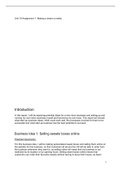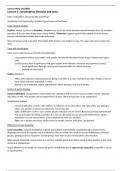Samenvatting
Summary A* Pearson Edexcel A level Geography Unit 1 Topic 2B Coastal Landscapes and Change Revision Notes
- Vak
- Instelling
- Boek
This got me an A* for A level Edexcel Geography. It's my revision notes for Topic 2B Coasts which, like the rest of my geography notes, are filled with case studies, facts, diagrams, and explanations. I only used this for my revision for all my mocks and actual exam and got A*s in all. It's also go...
[Meer zien]













